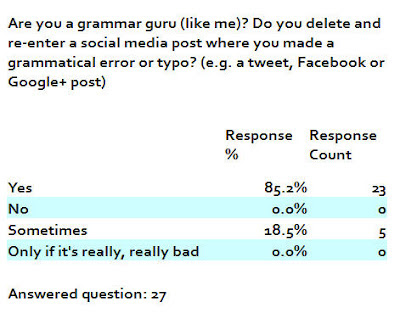Five new social networking applications: Cool or creepy? was co-written with my talented colleague, Brandi Boatner, and originally published on April 17, 2012, and is owned by IBM.
I recommend checking out the IBM Social Business Insights blog for some compelling and though-provoking content.
Five new social networking
applications: Cool or creepy?
The different ways social networking can connect people is
constantly expanding, with new applications announced daily. There are so many
new ideas and technologies, that privacy laws can’t begin to keep up with the various
ways of seamlessly sharing your online data and preferences.
For instance, most people are familiar with the most popular
geo-location applications such as Foursquare and Google Places, where users can
check in when they’ve arrived at a new destination, and notify their networks
of their latest location. Below is a list of five new applications that beg the
question: Are these cool or creepy?
- In
late February, KLM Royal Dutch Airlines announced they were introducing a
new program called “Meet
and Seat,” enabling passengers, through either their Facebook or
LinkedIn profile, to not only select their seat on the plane, but to select
their flight seatmates. KLM is looking to improve the entire customer
experience by including this mechanism for travelers going to the same
conference or convention to self-connect. And taking it even further, KLM
is encouraging seatmates to meet before the flight for coffee in the
terminal or perhaps even sharing a taxi at their new destination.
Cool/creepy factor: For a single person, this could feel like a speed date that continues hours past the normal five-minute limit, with little hope of escape. For someone looking to network with potential partners, employers, and so on, this could be a great opportunity.
- After you
sign up for an application called Tripl, a
new social travel service, you can interact with recommended locals and
travelers connected to your existing network. You and your friends can
recommend “must meet” locals on your trips. When you add your trip plans,
you can find out who – local and traveler – will be at your destination.
And locals are notified when other Tripl members are visiting.
Cool/creepy factor: It really depends on your network doesn’t it? If members are vetted, you might feel comfortable meeting a visiting member for coffee, or contacting a local when you reach their city, but if not, then what?
- Fashism is a web and smartphone app that
lets community members give and receive real-time feedback on photos of
outfits with a love it or leave it voting and comment feature.
Editor-selected accessories are available for purchase from within the
app.
Cool/creepy factor: Pretty cool, actually. It would be a lot of trouble for someone to join just to make snarky comments about random people’s outfits, so it seems like a decent way to put together great outfits for the fashionistas among us.
- According to the website, Highlight gives you a sixth sense about the world around you, showing you hidden connections and making your day more fun. If someone standing near you also has Highlight, their profile will show up on your phone.
As you go about your day, Highlight runs quietly in
the background, surfacing information about the people around you (up to a football-field
length away). If your friends are nearby, it will notify you. If someone
interesting crosses your path, it will tell you more about them.
You can see their name, photos of them, mutual
friends, and anything else they have chosen to share. When you meet someone,
Highlight helps you see what you have in common with them. And when you forget
their name at a party a week later, Highlight can help you remember it.
Cool/creepy factor:
Highlight does have the promise of making people-watching fun by allowing you
to get information about those you watch, however, who is watching you? Do you
want a stranger on the street to know so much about you; or are strangers just
friends we haven’t met yet?
- Pair is a social app for couples; it lets
you communicate with one other person – ideally a spouse or romantic
partner. Upon signing up, you provide an email address for the person you
want to pair with, and that person gets an invitation to the service. You
can unpair whenever you want, but you can’t pair with more than one person
at a time.
The main section of the app is a single stream of communication between you and your loved one, with pictures, video, and shared locations posted directly on the timeline. When both partners are online, the app becomes like a chat program, letting you know when the other person is typing, and lighting up a button at the top of the screen that lets you initiate a Facetime conversation.
Cool/creepy factor: This too is actually cool especially for those who find themselves in a long-distance relationship, given the current economy and state of employment for many. Pair is unlike Facebook and Twitter; it’s inherently not a place for narcissism. Anything you were going to brag about –such as a promotion or well-crafted meal – is merely conversation when it’s between you and a close companion. There’s no social pressure with pandering for Likes or Retweets.
The proliferation of smart phones and the social networking
explosion have created new and uncharted opportunities for expanding our social
networks and meeting people in ways unheard of even five years ago, as our
survey of new apps has shown us.
Arguably, each of these apps potentially has factors of
coolness and creepiness, depending on who is using the application, and why. Seamless
data sharing means that we no longer have to give applications permission to
use our public data. It’s a reminder to us all that we’re responsible for
regularly checking and managing our privacy settings on our social networking
sites and applications.






